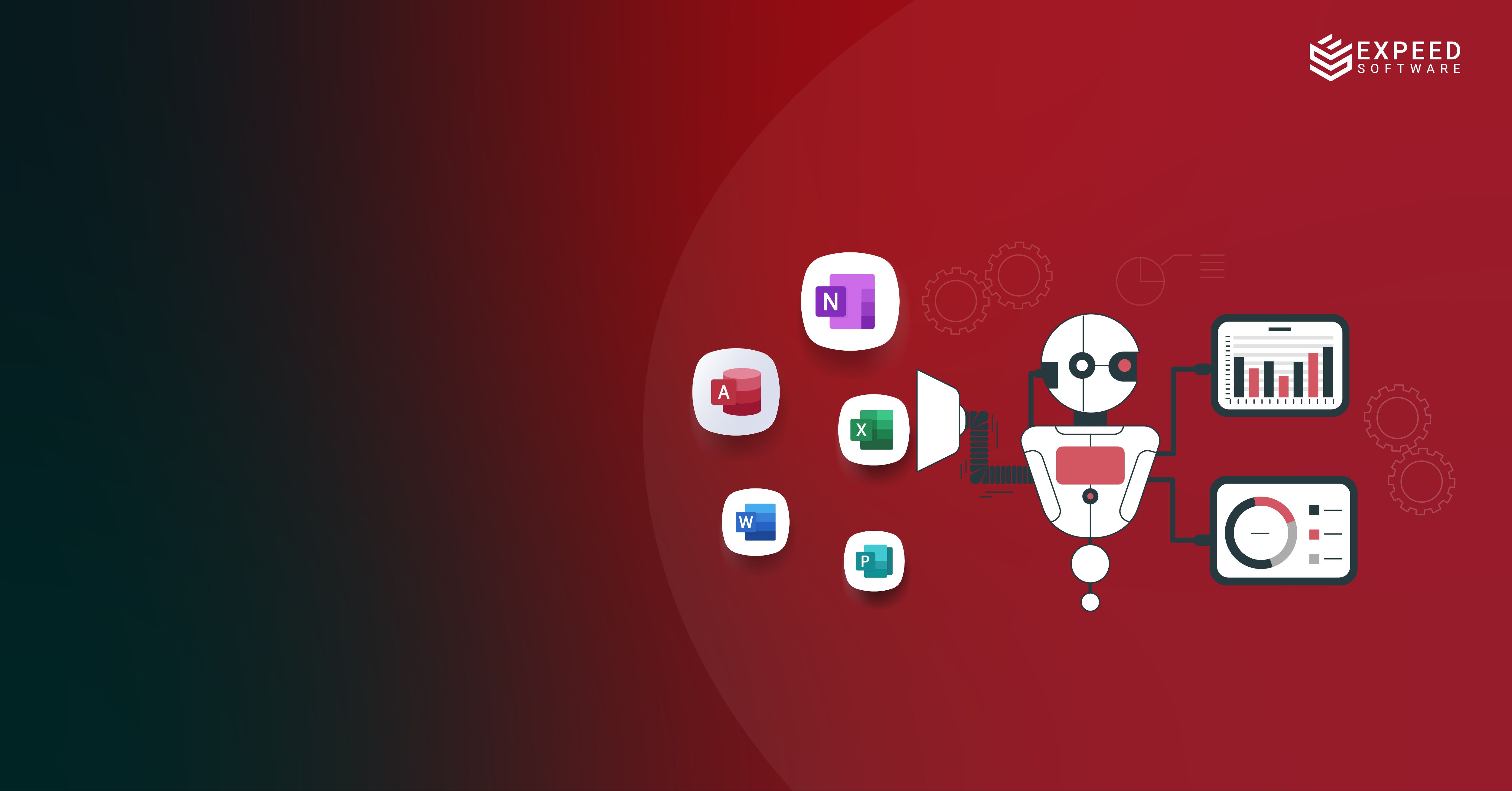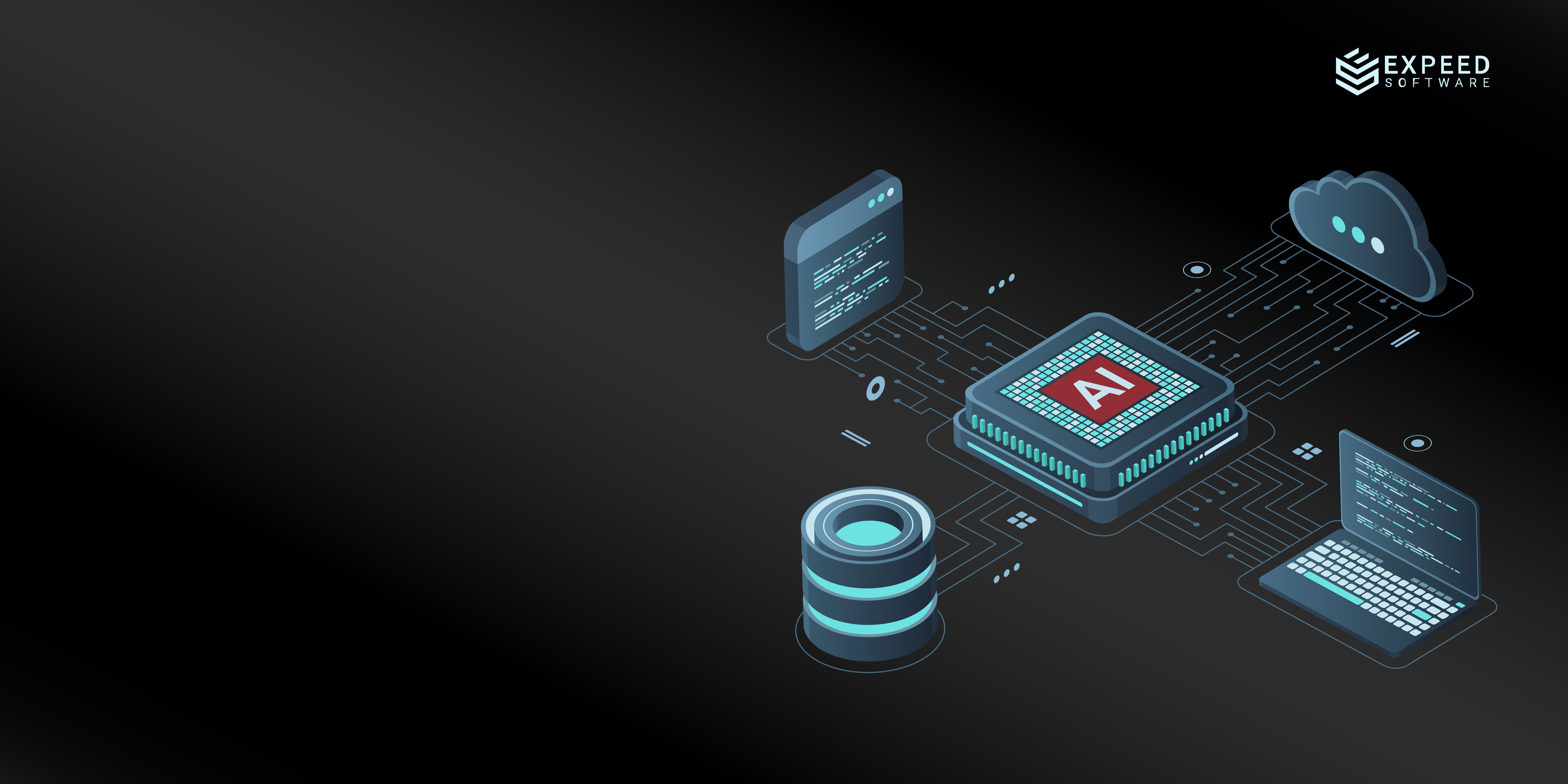What’s Instore for Custom Web App Development Companies in 2024
As we move into the last leg of Q1, it’s time to take a look at the custom web application development trends and technologies that are promising to go big in 2024.
Whether you’re a business dealing in digital products and services or a web app development company, staying abreast with the latest technologies is vital, not just for thwarting competition, but for meeting the rapidly changing user expectations.
So, here’s our list of top custom web application trends that are making the noise this year. In this blog, we’ve focused on those web app development trends that have the most chance for widespread adoption based on practicality, relevance to current market requirements, accessibility, and cost of implementation. We’ll also be looking at some brands and businesses that already have a headstart in implementing them for growth and achieving new milestones.
1. Progressive Web Application Development Gaining Traction
A concept first introduced by Google in 2015 to bridge the gap between web and mobile app experiences, Progressive Web Apps (PWAs) have garnered interest from both developers and businesses over the years. PWAs use web browsers to deliver high-quality user experiences that rival native apps, allowing businesses to reach more mobile users without additional app development costs. The core principles of PWAs include responsiveness, offline capability, app-like interactions, fresh content, safety, discoverability, and re-engageability.

So, why are we expecting PWAs to grow immensely popular this year? Of the many factors that contribute to the PWA’s rise to popularity, one stands out as the most crucial. Offering a mobile experience is no longer optional for businesses. The need for mobile-friendly apps is at an all-time high. However, for most companies that primarily function on web applications, mobile app development is an additional cost, both in terms of development and maintenance. Choosing a low-cost mobile app development is risky and is often associated with low-quality products that either fail to launch or crash after a certain point.
Here, PWAs offer the perfect solution. Moreover, with advancements in web technologies like HTML, CSS, JavaScript, and Web Assembly, today’s web app development companies can create powerful and feature-rich PWAs that don’t compromise on experience quality or security. And here’s the cherry on top – PWAs offer SEO benefits, making apps more discoverable and accessible to larger crowds. In the age of digital marketing, capitalizing on these features makes the most sense.
Best PWA Examples to Refer
- When Pinterest realized that its mobile web experience was lagging in engagement and conversion rates, it introduced its PWA version around mid-2017. The transition proved beneficial as the company reported significant increases in time spent, user engagement, and ad revenue, demonstrating the impact of PWAs on business metrics.
- The Starbucks PWA was also launched in 2017, in an attempt to offer a more engaging, fast, and inclusive ordering experience for their customers. Now that customers could browse the menus, and customize their orders, even in offline mode, their number of web users doubled, and so did their online orders.
2. The Use of Low-Code/No-Code Web App Builders
A development approach designed to simplify and fast-track the web app development process, low-code/no-code platforms have taken the industry by storm. Although the concept in itself existed in one form or another even during the late 1990s, the platforms that we identify as modern low-code application builders have evolved significantly to become a key part of today’s technology landscape. In 2024, we can expect this trend to gain more momentum as the reports indicate that the global low-code platform market is forecast to amount to approximately $65 billion by 2027.

Data Source: Colorwhistle.com.
The reason for this growing popularity can be linked to businesses looking for a low-cost and less resource-intensive approach to selling their products and services digitally. A low-code GUI allows developers and non-developers alike to construct applications by dragging and dropping components into a canvas. With lower maintenance costs and more agility and flexibility, low-code/no-code platforms are the first option for most businesses looking to accelerate their digital transformation.
Best Low-Code/No-Code App Development Use Cases
A perfect example of using low-code app builders for accelerating growth and transformation is Siemens. A global powerhouse in electronics and electrical engineering, operating in the industry, energy, and healthcare sectors, Siemens used a low-code platform to:
- facilitate rapid prototyping and app development
- increase efficiency significantly by quickly building applications that could streamline operations,
- open the doors for innovation and improvement by empowering employees closest to their problems to directly contribute to their solutions.
3. Implementation of Motion UI in Web App Development
In an age where content personalization and immersive web experiences are vital for digital success, Motion UI has been positioned as the most valuable technology aiding digital transformations in 2024.
To preface, Motion UI is a SASS (Syntactically Awesome Style Sheets) library that enables developers to craft fully responsive animations and CSS transitions. As app development moves more toward dynamic and responsive web interfaces, Motion UI paves the way for interactive and lifelike user experiences that can help retain users’ attention longer.
While the technology or the concept in itself is not new, the advancements in other web technologies are making it possible for businesses and web app development companies to implement Motion UI more confidently, without affecting the app’s load time, or performance.
Motion UI is not just a technology choice, it’s a design choice as well. The overall shift towards minimalist design bodes well for Motion UI as it offers web app designers and content creators the choice to communicate more through animations while occupying less digital real estate.
Best Motion UI Examples to Refer
- A classic example of how simple animations can completely transform an app’s positioning – is Uber. By introducing Motion UI, the app enhanced the interactive scores and responsiveness of their ride-hailing process, keeping their users happy and engaged. These animations are designed to be smooth and to mimic the real-world behavior of objects, thereby grounding the digital experience in physical reality. Not only did it improve the users’ trust in the app, but it also served as an immediate form of feedback for user actions.

- As a platform that is designed for better communication and collaboration, Slack was able to leverage Motion UI to improve its user engagement. The smooth animations are not only fun to watch (often distracting users from any load time issues), but they also make navigation easier.
4. Building Web Apps With the Headless CMS Strategy
Another trend that has been making the headlines – is a Headless Content Management System (CMS). It is a back-end-only web content repository that can be accessed easily through an API for display across multiple platforms. Unlike traditional content management platforms that are complex, and rigid, a headless CMS separates content management from the presentation layer, offering unparalleled flexibility for developers.
While the business community loves how this technology is helping improve their web application speed and performance across multiple devices, web app development companies are excited about the developer-friendly environment it offers with APIs, SDKs, and other tools that streamline the process.
Being able to deliver content through APIs allows for more dynamic web applications. Above all, the entire system has been built using a very future-proof approach, as it can easily integrate with new technologies and platforms that emerge, ensuring longevity and relevance in a fast-paced digital landscape.
Examples of Successful Headless CMS Implementation
- A global brand like Nike needed a content management system that offered flexibility, and scalability while being able to maintain brand consistency across various digital channels. Enter a headless CMS solution that not only enhanced their user experience but also allowed them to quickly push updates and new content across platforms without needing extensive backend overhauls.
- Electronic Arts (EA) uses a headless CMS to ensure that gamers receive personalized content curated based on their behavior and preferences. The system also allows them to increase agility and send timely updates to their users.
5. Gamified Designs Changing Web App Development
Gamification is a very important UX trend in web application development that is rapidly changing our understanding of what constitutes a successful product. The use of game mechanics such as points, badges, leaderboards, and progress tracking has been found to encourage users to return regularly. And product designers are trying to leverage this psychology to improve user retention for their applications.
Gamification introduces elements of fun, competition, and achievement into non-game environments, making interactions more engaging and enjoyable. By tapping into the natural human desires for competition and recognition, gamified designs motivate users to engage more deeply with the content or service.
More engagement means more valuable data on user behavior and preferences. The fact that companies can use this data to improve content personalization, cross-sell products and services, and make more informed business decisions in general, is one of the many reasons why this web app development trend is going to be adopted widely in 2024.
Examples of Gamification in Web Applications
Gamification as a strategy can be implemented across many industries. Many educational apps, fitness apps, and finance management apps of today tap into game mechanisms to offer personalized user experiences. Here’s one example of how Duolingo used gamified designs to keep their users coming back.
The language learning application, Duolingo, cleverly used game mechanisms to give its users a very enjoyable learning experience that kept them hooked to their courses. Here are some key elements from their app design:
- Points and Levels: Every time a user completes a lesson, they get awarded points that contribute to leveling up and unlocking new content.
- Streaks: Users are encouraged to log in every day to maintain a learning streak, which is again rewarded on completion.
- Leaderboards: Leaderboards simulate competition that encourages users to consume more app time and finish their courses faster.
- Achievements and Badges: Achievements and badges are awarded for completing specific milestones or challenges, offering tangible evidence of progress.
- Personalized Learning Paths: Gamification is used to tailor the learning experience to the user’s pace and preferences, making learning more effective.
Today, Duolingo has become one of the most popular language learning apps worldwide, with millions of active users.
6. Web Applications Using IoT and IoB
If 2020 was the year of the Internet of Things (IoT), then 2024 is most likely to be the year of the Internet of Behavior (IoB). IoT solutions have already taken a stronghold over most industries and have almost perforated into every aspect of our daily lives. The concept of IoB takes it a step further by focusing on improving products and services based on the data gathered through IoT channels.
To put it simply, IoB is an attempt to make more meaningful decisions based on the huge volume of data that IoT has unleashed upon us. The increase in IoT solutions is just one of the factors fuelling the IoB trend. The other reason is the significant advancements in artificial intelligence and machine learning technologies that are making it possible for businesses to quickly analyze large amounts of data and gather actionable insights in real-time. With IoT and AI showing no signs of slowing down, there’s a lot of attention on IoB to become the next big thing in web application development.
Dipping Into the IoB Bag of Tricks
- A prime example of an IoT product that is currently exploring the IoB vertical is the Philips Hue smart lighting system app. What started as an application that allowed users to control their lighting remotely is now exploring energy savings, sustainability, and advanced personalization features by studying the data received on user behavior patterns. Today, the app has positioned itself as a leader in the smart home technology space, and much of its popularity and success comes from its advanced features and user-centric designs.
- Another market leader that has already identified the potential of investing in IoB is Fitbit. The company was one of the first to explore the wearable technology market, and today they have aced the game by adding value to their products through personalized recommendations and fitness reports. The app uses all the data collected about the user’s activities, health metrics, and sleep patterns to set personalized goals, offer motivational messages, and track progress over time.
7. Voice Search Optimization in Web App Development
The devices that we use today are getting smarter by the day, with more voice-enabled services and features. So it is hardly surprising that technology should now move towards optimizing voice searches. The number of people adopting voice-assisted smart speakers and smartphones is constantly growing, with more people preferring voice searches. Voice search offers a hands-free alternative to typing, making it an attractive option for web applications and mobile users seeking information, directions, or performing tasks.
This change in search behavior, coupled with advancements in NLP and machine learning technologies, is pushing innovations in voice search optimization. Businesses in particular can use these optimization techniques to improve their visibility during voice searches.
Examples of Voice Search Optimization
A noteworthy mention in the field of voice search optimization is that of Nestlé. Their strategic decision to be one of the first to implement voice search optimization meant that their recipes and cooking instructions had the best shot of being seen by users trying to access them through voice searches. The first step is to conduct extensive research on how their target audience is most likely to phrase their queries. Here are some other voice optimization strategies that the company is likely to have applied.
- Implementation of structured data using Schema.org markup to annotate recipes and cooking instructions on their website.
- Optimization of content for long-tail, conversational keywords that people were likely to use.
- Implementation of local SEO strategies optimized for local business listings and localized content.
8. Widespread Adoption of GraphQL
Introduced by Facebook in 2015, GraphQL is an open-source data query and manipulation language that allows developers to simplify data fetching with more precision and improved efficiency. Compared to traditional REST APIs, GraphQL offers many advantages that make it a better choice for custom web application development, data management, and app performance.
This technology is particularly popular among developers and web app development companies as it allows them to request exactly the data they need and nothing more. Moreover, GraphQL subscriptions offer a way to maintain real-time data updates, which is increasingly important for dynamic and interactive web applications. With a more decoupled architecture between front-end and back-end, GraphQL supports agile development.
What businesses need to understand is that implementing GraphQL is one of the best ways to create fast, responsive applications that meet the needs of today’s user market.
Best Examples of GraphQL in App Development
- GitHub is a fine example of how GraphQL can be implemented effectively to improve productivity and performance. The developer platform replaced its traditional REST APIs with GraphQL APIs and saw a significant reduction in development time and effort. The shift also allowed developers to design features and functionalities without being constrained by the limitations of traditional API query methods.
- As an e-commerce platform, Shopify leveraged GraphQL to create more personalized shopping experiences. Shopify developers were able to streamline the data fetching process and create business-specific features and functionalities that were more attuned to the needs of the end customers. GraphQL’s ability to manage large sets of data queries also made it perfect for businesses that wanted to scale with Shopify.
The Future of Custom Web Application Development
Web app development technologies are constantly evolving and businesses around the world are constantly trying to keep up with the latest trends in this space. While these technologies may differ in terms of functionality and level of innovation, there appears to be a common theme among them all:
- Personalization of content and experience
- Advanced data analytics implementation
- User-centric design and immersive interfaces
When choosing new technologies, businesses need to look for solutions that cover at least one, if not all three, of these touchpoints.
And as the tech community continues to reinvent itself, we must also keep in mind the rapidly changing user behavior patterns and trends that ultimately drive this chain of action. Companies that are able to engage meaningfully with their customers, take in their feedback, and adapt to their needs quickly will be the ones that will thrive.
As a web application development company, our team at Expeed is ever-ready to learn and adopt new technologies and high-level themes that offer dynamic, engaging, and seamless experiences.

Expeed Software is a global software company specializing in application development, data analytics, digital transformation services, and user experience solutions. As an organization, we have worked with some of the largest companies in the world, helping them build custom software products, automate processes, drive digital transformation, and become more data-driven enterprises. Our focus is on delivering products and solutions that enhance efficiency, reduce costs, and offer scalability.


